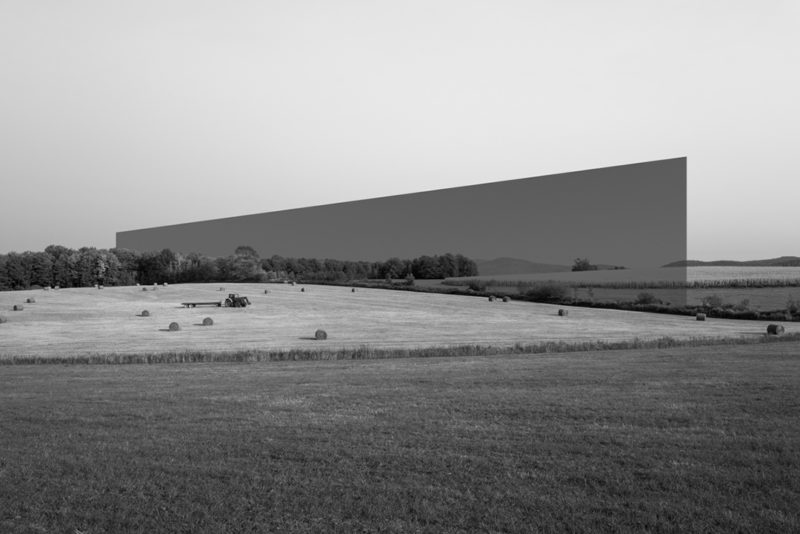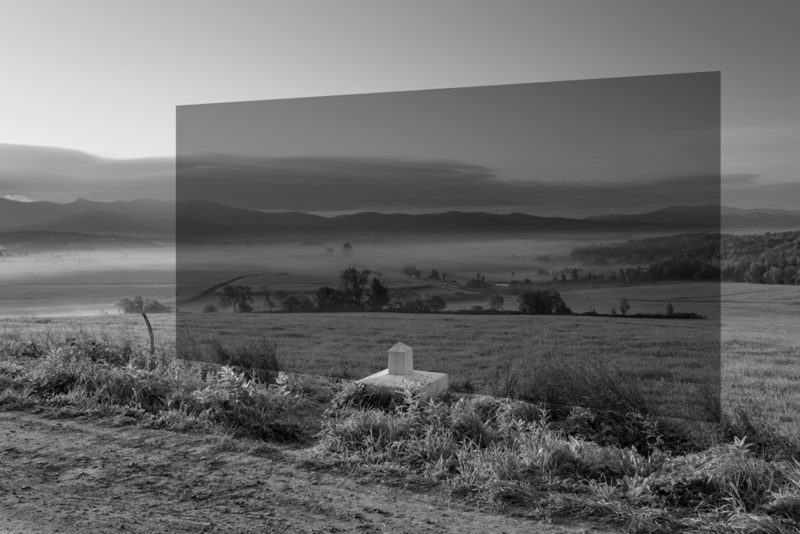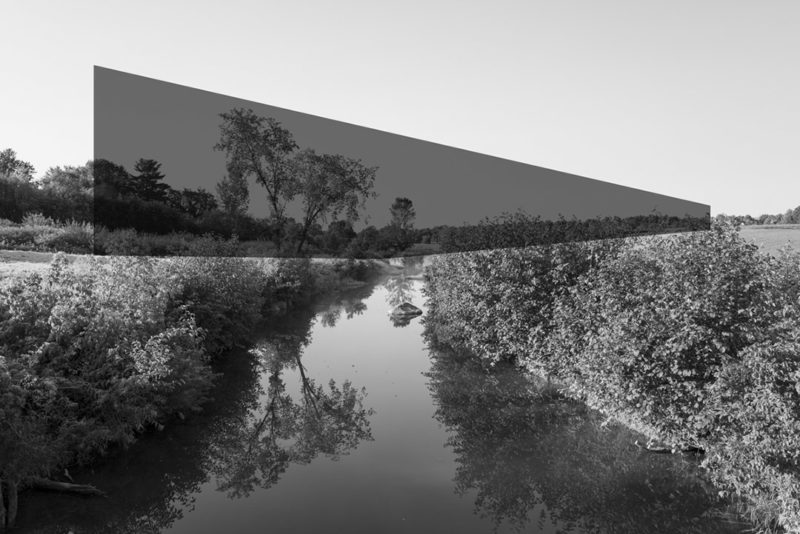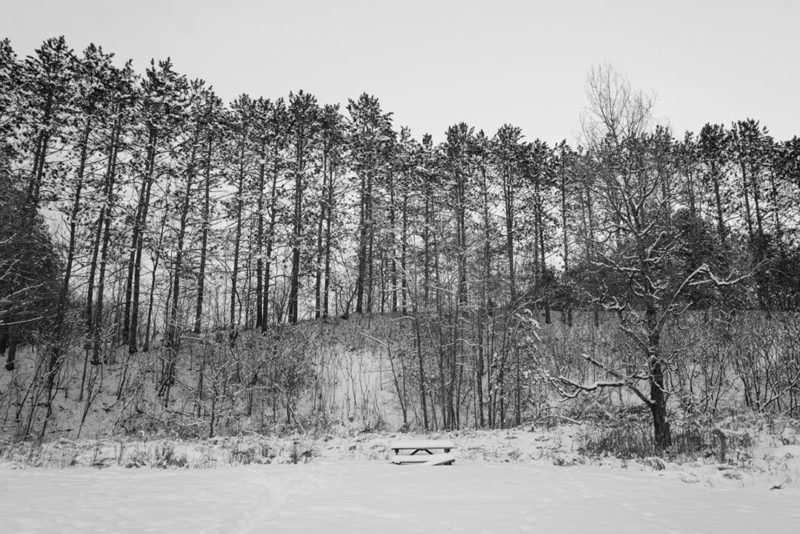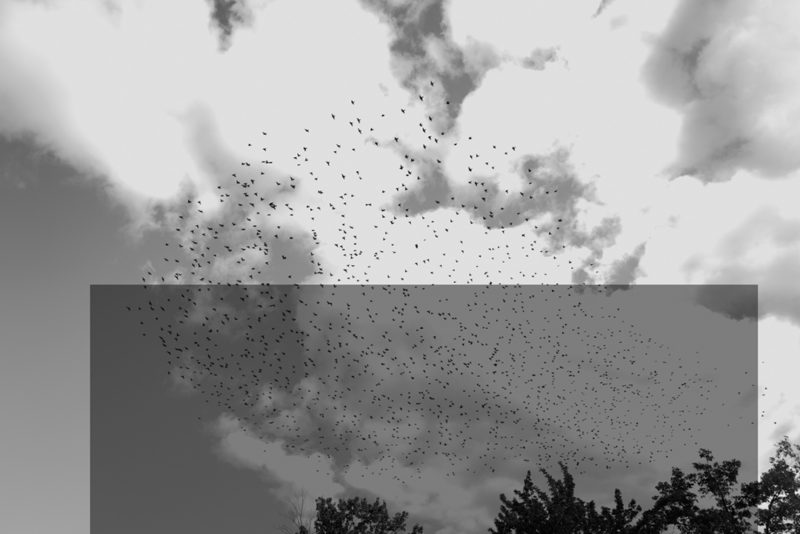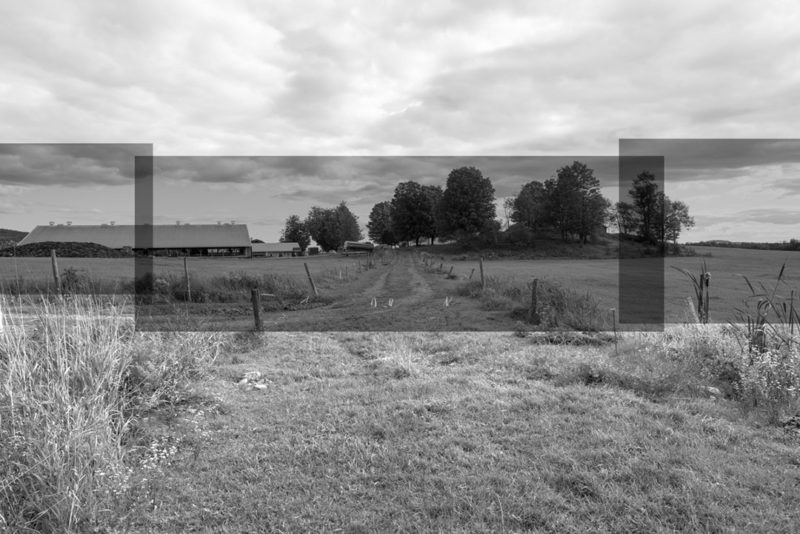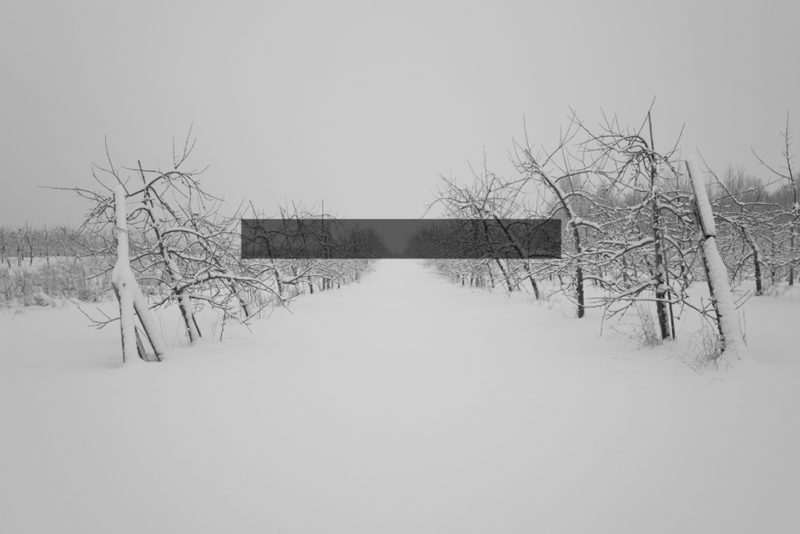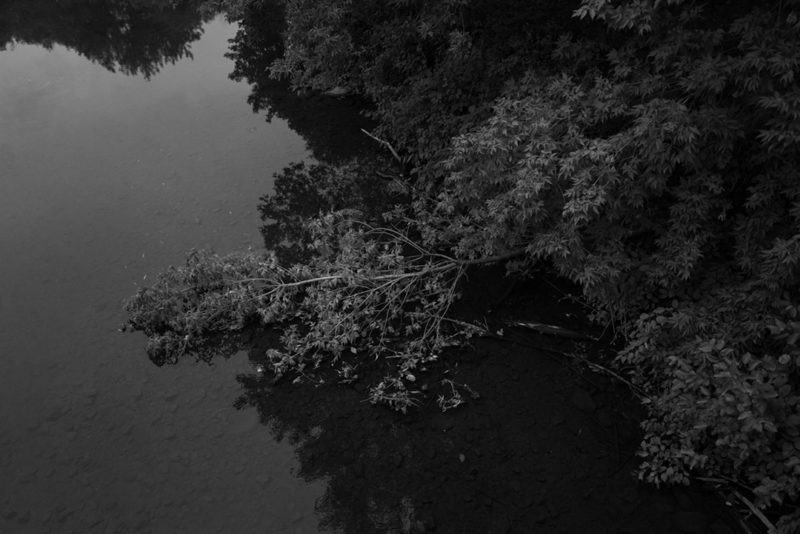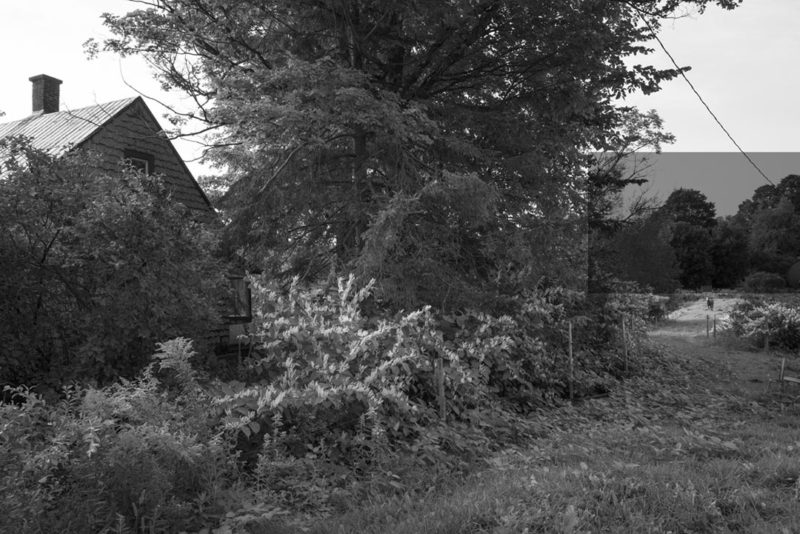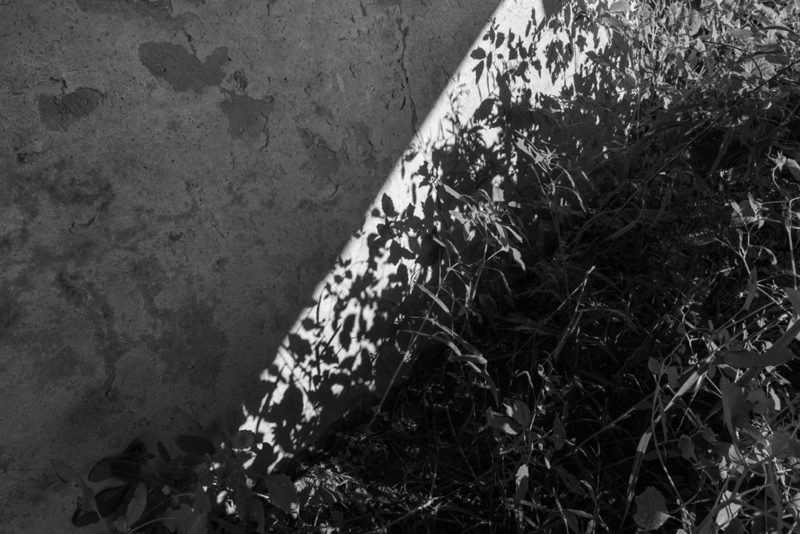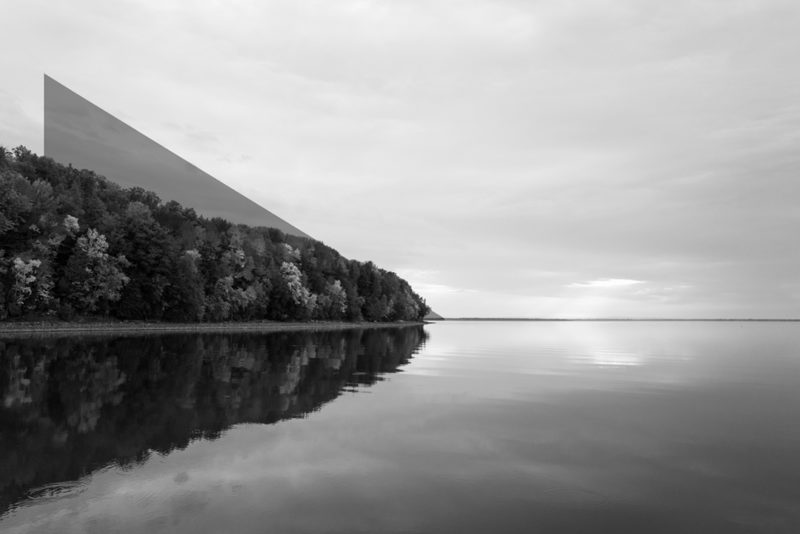[January 13, 2022]
By Mona Hakim
On the Border, Michel Huneault’s recent photographic project, begun during a residency at Centre Adélard in Frelighsburg in fall 2020, was transposed to an online presentation thanks to a highly productive creative collaboration with Agence TOPO. Sixty landscape images and an equal number of transcribed oral histories document and narrate a short segment of the Canada–United States border. This group of images, combined with a singular dissemination procedure, resonates with an issue that has held Huneault’s interest for several years: migration.
Huneault took advantage of his residency in Frelighsburg to survey the area situated midway between lakes Memphremagog and Champlain, with the aim of documenting how COVID-19 was affecting the border. The pandemic jeopardized the arrival of asylum seekers, to whom the border was closed in April 2020. After exploring the conditions of the migratory flow via Roxham Road for several months in 2017, Huneault now had a good opportunity to follow up on the subject – to probe the perimeters of an unusual, and disturbing, state of paralysis.
Photographs and a few videos provide glimpses of a vast bucolic area, including farmland, lakes, fields with mountains in the distance, flocks of birds, backyards, marshes, snowy trails, forest details, pastures, and paddocks with horses. Plays on scale and framing, on shadow and light, and on high and low angles galvanize these quiet country spaces. Most pictures contain no human presence, except for the words of residents, gathered by Huneault as he travelled around, faithfully transcribed at the bottom of some images.
Here, the border stretching along the 45th parallel is arbitrary, barely perceptible, unremarkable. The invisible wall, however, is quite tangible. Not so long ago, Canadian and American neighbours shared the land and crossed the border waving at the customs officer without stopping their cars. However, a succession of events – from September 11, 2001, to the arrival of Donald Trump on the political scene in 2016, to the pandemic in 2020 – have helped to create a territorial and ideological division, exacerbating asylum seekers’ fears. In his note introducing the project, Huneault mentions having felt strangely nervous, even a sense of guilt, as he felt his way along this perimeter, groping for subtle signs indicating a change of country. Each time he returned to the studio, he quickly drew black squares on his photographs to remind himself where the border was.
By transposing geometric forms into the digital platform – thanks to the expert programming of TOPO – Huneault has made these markers a key element of the project. When the viewer stops scrolling to look at one of the many images treated in this way, after a couple of seconds a translucent dark-grey shape furtively, impassively appears in the peaceful landscape setting, a sort of separator that is symbolic both of the capriciousness of the territorial delimitation and of an actual “sanitary, political, social, and humanitarian screen,” as Huneault puts it. Certain connections can be made between this evocative surface and the green screen technique used in film, through which objects filmed separately from another source are inserted into the image, unbeknownst to the viewer.1 In this work, the screen walls, with their imperceptible and transitory presence, act as mirages. More concretely, short texts are occasionally inserted discreetly between the images. Sometimes ironic, sometimes confidential, emotional, or challenging, these short accounts by people who are as anonymous as the place where they live are engaging and intriguing. They weave the plot of an intuitive and enlightening narrative that resonates beyond the filter of the border and provides a structure for what is beyond our view here.
Behind the social and political issues that it raises, On the Border was first conceived as an experiment associated with the act of publishing. The digital apparatus programmed by TOPO is applied to attest to the arbitrary nature of narratives, challenging their impact on our reading experience. The continual flow of photographs, texts, and videos created by this apparatus proceeds from an openly random sequencing, evidenced by the unexpected repetition of images within the narrative, discordance between image and text, and a constantly changing story without true beginning or end. It is a destabilizing experience for user-readers, who must constantly navigate between the initial meaning of the story that they have memorized and conceptualized and the moment when they see this narrative plot assembled differently before they even understand it according to their own associational schemas. By inviting readers to participate in an exercise of random selection and connection, Huneault exposes them to the mechanisms involved in the creation of any book and helps them to develop a more critical attitude toward deciphering all content (visual or textual), the meaning of which is eminently changeable depending on its context.
In recent years, Huneault’s documentary approach has been inscribed within the “aesthetic journalism” movement, which consists of melding art disciplines with practices related to news and media. This multiform documentary style confronts events in the news by offering new frames for interpretation and dissemination, open to critical reflection, dialogue, and other phenomenological approaches, while engaging in preservation of the social relevance of photography. On the Border is a good example of this.
Michel Huneault is a documentary photographer and a visual artist. His work focuses on issues related to development, trauma, migration, and other geographically complex realities, including the impact of climate and sanitary changes. He has a master’s degree from the University of California Berkeley, where he was a Rotary Peace Fellow studying the role of collective memory after large-scale traumatic events. Before devoting himself to photography, he worked in international development for more than a decade. michelhuneault.com
Mona Hakim is a historian, art critic, and curator. Her research delves into various issues related to contemporary and current photographic practices. Her recent writings have appeared in the monographs Bertrand Carrière: Solstice (2020) and Isabelle Hayeur (2020). As a curator, she has organized more than twenty exhibitions. She has taught art history and history of photography at the college level.

